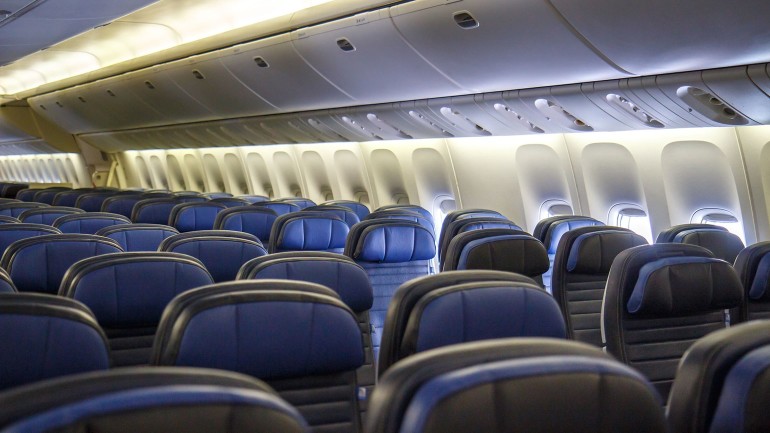Sponsored Listings:
Consumer advocacy groups are expressing concern about aircraft evacuation tests to be conducted by the FAA next month.
The tests, to be undertaken in Oklahoma City over the space of 12 days, will help the FAA fulfill a congressional mandate to establish minimum aircraft seat widths and minimum requirements for the space between aircraft rows.
Under FAA rules, aircraft must be able to be evacuated in 90 seconds or less. But the agency has not updated its evacuation assessment standards since 1990.
In an Oct. 21 letter to Department of Transportation secretary Elaine Chao and FAA administrator Steven Dickson, 10 consumer advocacy group called for the FAA to update those standards ahead of the tests.
The update should consider such as issues as the growing size of Americans, higher load factors and the increase in the number of carry-on bags brought onto planes by passengers, the groups said. The standards should also account for disabled passengers and for the increase in the number of animals being brought onto planes.
“As consumer and passenger rights advocates, we urge you to respond to our concerns before conducting the November tests,” the advocacy groups wrote. “We hope you agree that it is essential that FAA tests not simply rubber-stamp airlines’ current and future safety-questionable seating configurations for purposes of meeting the FAA’s 90-second evacuation threshold.”
In emails with Travel Weekly, the FAA chose not provide specifics of its testing plan in Oklahoma City. But various media reports say the tests will be conducted with 60 participants at a time. FAA spokesman Paul Takemoto said Tuesday that the testing simulator will be capable of testing multiple seating configurations.
In recent congressional testimony, FAA officials said the tests would be conducted in a dark environment and with half of the evacuation doors incapacitated. Deputy FAA administrator Dan Elwell said that the tests will include lap children and animals.
However, a report by ABC News last Friday said that the test won’t account for animals, small children or disabled passengers.
The consumer groups chafed at the notion of conducting the tests with only 60 participants.
“The use of a simulator configured in such a way, with only a fraction of the passengers of a typical airplane, would constitute a fatal flaw in the testing model,” they said.
Takemoto said the FAA is reviewing the letter written by the groups.
“The agency’s evacuation standards are based on decades of scientific studies,” he wrote. “The advancements in cabin safety have contributed to the increased survivability of every new generation of passenger aircraft.”
He added that the tests are just the first of several steps the agency will take to deepen its knowledge of evacuation safety.
Through the years the FAA has implemented numerous regulations designed to improve the likelihood of passengers surviving a plane crash. In 1994, for example, the agency set minimum standards for the width of the passageway from the aisle to exit doors, while rules to increase fire suppression and reduce the flammability of aircraft insulation were put in place in 1998 and 2000 respectively.
In June 2018, the DOT’s Office of Inspector General began an audit of the FAA’s oversight of aircraft evacuations procedures. The audit is expected to be finished this fall.
Last October, as part of the 2018 FAA reauthorization bill, Congress gave the FAA a year to set minimum standards for seat width and the space between rows. That deadline has already passed.
The consumer groups that signed the letter were the National Consumers League, Business Travel Coalition, Consumer Action, Consumer Federation of America, Consumer Reports, EdOnTravel.com, FlyersRights.org, Travel Fairness Now, Travelers United and U.S. Public Interest Research Group Education Fund.
Source: travelweekly.com










